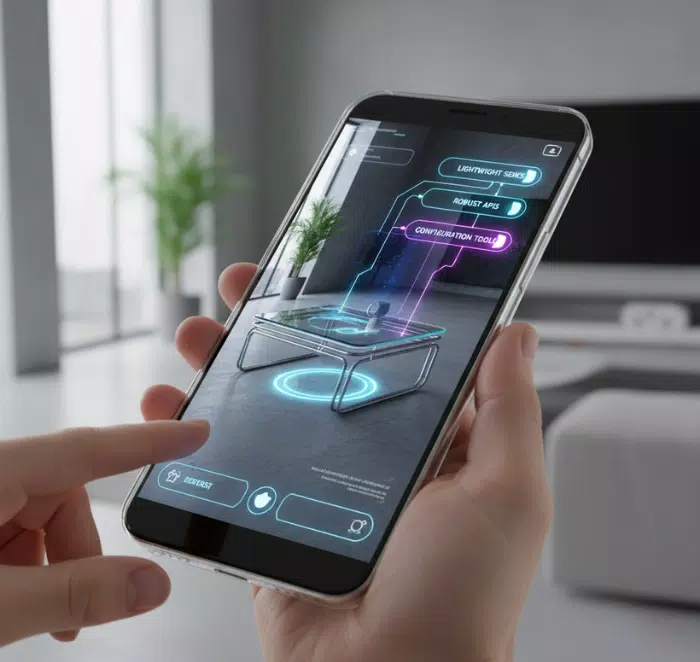AR app development company: a platform for innovative product experiences


Enhanced client satisfaction


Visual & experiential shopping
Easy app integration

Frequently asked questions
An AR app development company is a business. It specializes in creating AR applications. The company uses AR technology to blend the digital and physical worlds. It develops apps that overlay computer-generated information, like graphics, sounds, and 3D models, onto a consumer's view of the real world through their smartphone or other devices. AR app development companies serve various industries: retail, gaming, education, healthcare, etc. It aims to improve customer engagement, marketing, and training.
The AR app development process involves the following key steps: Discovery & planning First, you need to outline the purpose of your app and define your project goals for consumers. Then, you should conduct market research and identify your target audience. After that, you can choose the right AR technology and appropriate SDK. Design In this stage, you need to create visual blueprints of the app's layout and user flow. Then, you should develop 3D models and assets to superimpose them onto the real world. It is important to build intuitive and interactive experiences. To make a perfect blend of the physical and digital world. Development Now, you can integrate the AR SDK into your app and enable core AR capabilities, such as motion tracking and realistic rendering. You need to write code for front-end and back-end development. Most importantly, you can add animations, 3D objects, or any interactive elements to your app via APIs. App testing Lastly, you should test your AR app’s performance, functionality, and bugs. It will help you get a smooth customer experience. Deployment & monitoring Now it's time to launch your app on any app store. You should continue monitoring the app. You need to collect client feedback and update the app to improve it.
AR apps can generate privacy issues for consumers. The apps may access their data and physical surroundings. So, you should consider data security. You need to obtain consumers' consent to prevent any misuse of their data.
AR app developers use a combination of advanced technologies and frameworks to create interactive AR experiences. Popular tools, such as ARKit for iOS, ARCore for Android, and Vuforia for cross-platform AR development. They also use Unity and Unreal Engine for 3D graphics and animation, along with WebAR for browser-based AR. They use accurate tracking and real-time rendering technologies to ensure accuracy.
You can add AR apps to various advanced technologies. It will enhance functionality and customer engagement. Technologies, like AI, improve object recognition and personalization. At the same time, ML helps the AR app adapt to consumer behavior. Also, integration with IoT gives your customers real-time data visualization from your connected devices. Plus, cloud computing technology offers scalability and storage efficiency. A combination of 3D modeling, blockchain, and GPS technology offers secure transactions, realistic simulations, and location-based AR experiences. You can make AR apps interactive, data-driven, and versatile across industries with these integrations.
If you employ a professional AR app development company, you can get skilled developers, advanced tools, and reliable project management to create extensible AR applications. The company will deliver standard and interactive AR applications to meet your business goals. They can guarantee performance and innovation for your app and offer easy user experiences across multiple platforms, with their expertise in the latest technologies.
















